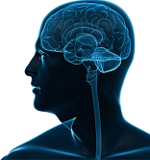Eye Tests as Screening Tool for Acute Mild Traumatic Brain Injury
Department of Defense researchers endorse use of eye tests as an effective screening tool for acute mild traumatic brain injury (concussion)
In prior posts we have discussed the growing recognition that one of the signature symptoms of concussion is a subtle change in visual processing. Army researchers funded by the US Department of Defense have just published findings further supporting this understanding in the November 15, 2016 issue of the Journal of the Neurological Sciences.
In the published findings, the authors note that “mild” traumatic brain injury (mTBI) is sometimes difficult to diagnose because of the overlap of symptoms with other disorders such as PTSD. This has led to a quest for biomarkers or diagnostic tests (e.g. protein, imaging, cognitive, neurosensory.) This quest is especially significant for warfighters at risk for more severe “second-impact” concussions and whose lives and safety may be endangered by visual or cognitive compromises.
The researchers chose to examine visual symptoms, recognizing that seven of the twelve cranial nerves, along with approximately 30% of the brain, are involved in visual processing. Their study examined the effectiveness as screening tools of an easy to administer eye movement test known as the King-Devick (KD) test and a visual symptom survey tool known as the Convergence Insufficiency Symptom Survey (CISS). The KD test has been used to assess dyslexia and other learning disabilities and, more recently, as a potential screening tool for sports concussions.
The research study looked at active duty military personnel (87 men and 21 women) who suffered a medically documented concussion in the previous 72 hours. (None of the subjects suffered a blast-induced injury, so the mechanisms of injury were similar to civilian victims.) The control group was an age- matched group (79 men and 21 women) with no history of concussion. The results showed significant differences between the control and experimental groups, including a greater than one-third slower reading time in the mTBI group. Patients with mTBI had significantly higher near-point convergence scores than control subjects, longer times to complete the KD test, and more symptoms on “Convergence Insufficiency Symptom Survey” (CISS).
This study suggests that visual symptoms may be even more prevalent than previously suspected. The value of this testing, the researchers note, is that “we can get that individual into treatment as soon as possible, knowing this concussion is present, with all of the ways that it adversely affects the oculovisual system for the individual and their quality of life.”

